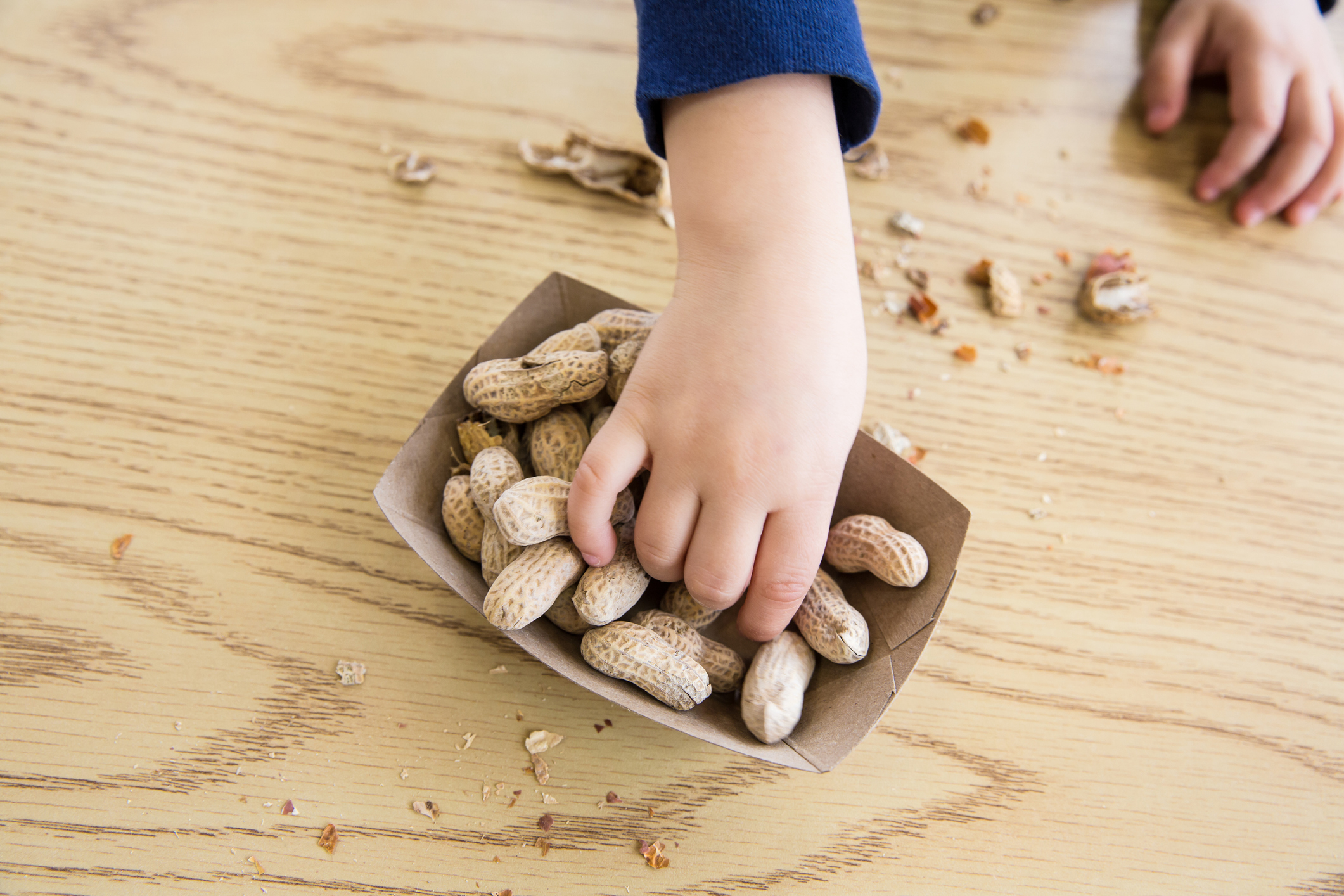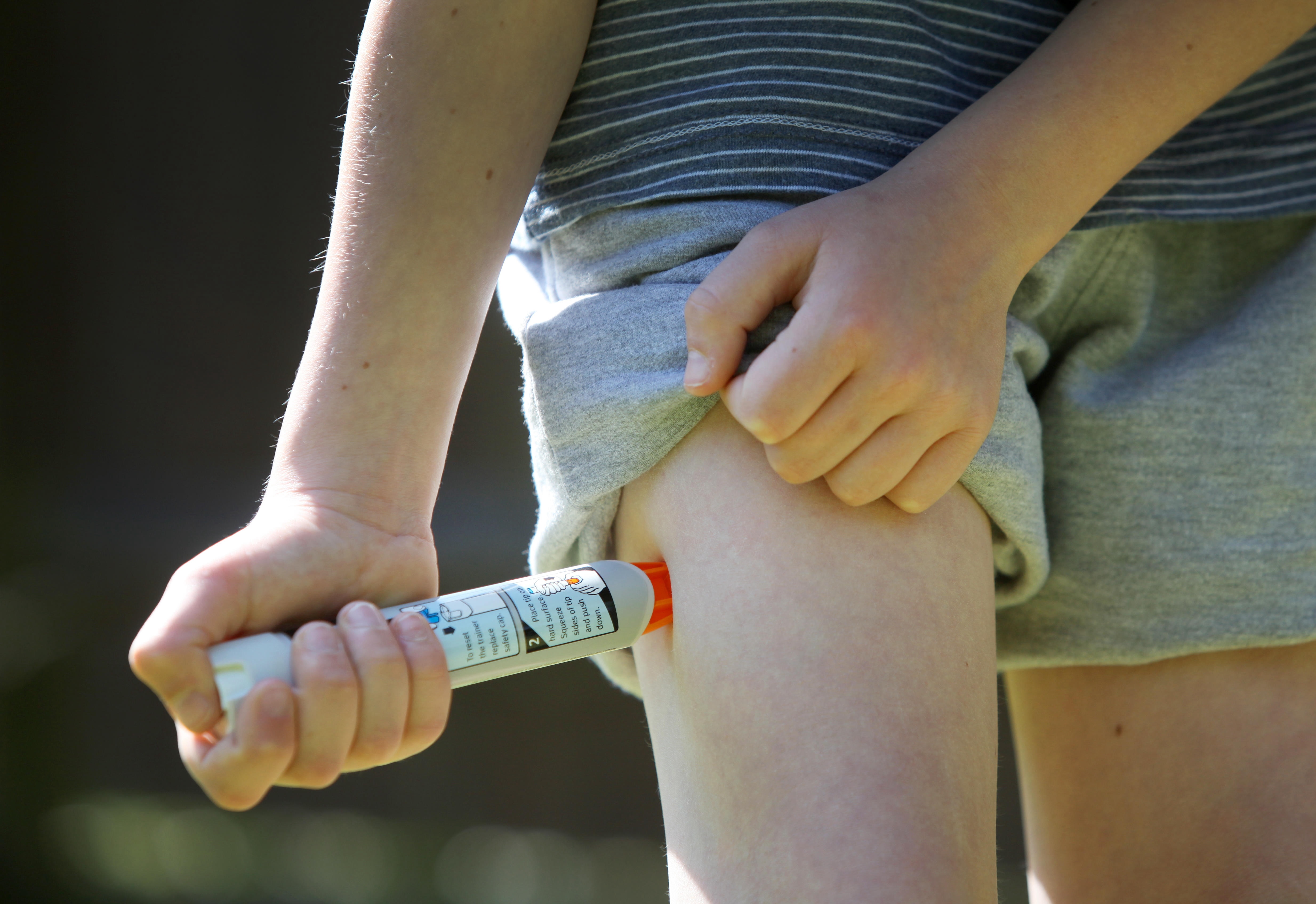
Health & Medicine
Allergies, food labelling & saving lives

Three in 100 Australian kids have a peanut allergy. New research is investigating the quality-of-life benefits of new treatments and their value for money
Published 19 March 2024
For many people peanuts are a healthy snacking option, but for those people with an allergy, peanuts can be a serious, or even deadly, health risk.
Interestingly, Australia has quite a high rate of peanut allergies. At one year of age, about three in 100 children are allergic to peanuts.

And if you’re a parent of a child with peanut allergy – or any allergy for that matter – it can be incredibly stressful.
Parents need to constantly be one step ahead: Scrutinising food labels, planning shopping lists, monitoring school lunches and letting other people know about their child’s allergies.
Then there’s the EpiPen – a life-saving medication used in an emergency when someone is experiencing a severe allergic reaction, known as anaphylaxis – which always needs to be on hand.

Health & Medicine
Allergies, food labelling & saving lives
But despite all of these precautions, parents and children often live in fear of an allergic reaction.
Over the past 10 years, an increasing number of peanut allergy treatment options that aim to either desensitise people or induce remission of an allergy (previously known as sustained unresponsiveness) have been tested.
When we talk about desensitisation, it refers to a temporary increase in allergic reaction threshold, meaning an increase in the amount of allergen that triggers a reaction. Desensitisation requires ongoing therapy to maintain protection.
Remission refers to a longer-lasting protection – allowing patients to eat the allergen (in this case, peanuts) freely without ongoing treatment.

Oral immunotherapy (OIT) is perhaps the most widely known peanut allergy treatment, with Palforzia the first and only US Food and Drug Administration (FDA) approved treatment for children with a peanut allergy aged four to 17 years.
Following its FDA approval in 2020, Palforzia was approved in the European Union (EU) and recommended by the UK’s National Institute for Health and Care Excellence (NICE) in 2022.
Palforzia is effective in desensitising around 50 per cent of children with a confirmed peanut allergy, increasing their temporary reaction threshold to around four peanuts.

Sciences & Technology
From ‘honey laundering’ to fake free-range: food fraud costs billions
But it a carries a risk of additional allergic reactions to the treatment itself, and patients are required to stay on a regular dose indefinitely to maintain protection.
These factors lead some physicians, patients and regulatory agencies to question whether treatment provides greater benefits than strict avoidance.
The US Institute of Clinical and Economic Review has expressed concerns that Palforzia may not be cost-effective. In other words, the clinical benefits may not justify the monetary cost nor the cost of additional adverse events and the uncertainty around patient quality-of-life.
And here in Australia, the Australasian Society of Clinical Immunology and Allergy currently states that OIT is not yet ready for routine clinical care outside of clinical trials.

A type of oral immunotherapy, known as the Combined Probiotic and Peanut Oral Immunotherapy (PPOIT), has been tested through a series of Australian clinical trials particularly aimed at children.
PPOIT is a one-off treatment that spans 1.5 years (as it takes some time to build up protection) and these clinical trials have shown that the addition of probiotic to OIT may reduce mild treatment reactions like gastrointestinal side effects.
Our clinical trial team recently published long-term follow-up results which indicated that PPOIT led to remission in approximately 50 percent of treated children four years after they completed the treatment.

Health & Medicine
How allergies may get under our skin
In this case, remission means that there is no allergic reaction when consuming peanut, even if peanut has not been regularly consumed for weeks or months, which removes the need for strict ongoing dosing.
Most importantly, the results shows that remission offers significant quality-of-life benefits. For those who did not achieve remission, their quality of life was not reduced likely due to the added beneficial impact on coping skills from being involved.
While PPOIT works for a considerable proportion of children with peanut allergy, a pivotal question remains: is the cost worthwhile given the benefit?
Our latest cost-effectiveness study looked into whether PPOIT provides good value for money when compared to the current standard care of strict peanut avoidance. We used data from the PPOIT-001 clinical trial and its long-term follow-up.

We found that although PPOIT costs more at the outset including medical staff time to supervise patient up-dosing, cost of PPOIT itself and the food allergy test, the added remission and improved health-related quality-of-life may be worth it.
More specifically, the cost of managing adverse events in the group of children receiving PPOIT is the same compared with strict peanut avoidance.
This is great news for parents concerned about risk.

Health & Medicine
How do organic and non-organic foods influence our gut microbiome?
Overall, the treatment cost per child was estimated to be approximately $A5,000.
Governments often use a measure called cost per quality-adjusted life year gained to work out the value for money of different treatments. This measure helps with resource allocation decisions by calculating the cost of gaining one year of life with full quality.
When we look at PPOIT in particular, the total healthcare cost per one additional quality-adjusted life year gained if we compare PPOIT to strict avoidance was an estimated $A20,000. This is well below the threshold at which Australia tends to fund new pharmaceuticals which sits at around $A50,000 per quality-adjusted life year gained.
So, it looks like PPOIT is good value for money.
To analyse the cost-effectiveness of PPOIT, we used a 10-year time line. This included 1.5 years of actual clinical trial data, four years of post-trial follow up, and 4.5 years of modelling. And we included all eligible participants, whether they achieved remission or not.

Our research is an important step towards finding a longer-term solution for children with peanut allergy.
While the PPOIT won’t work for every child, around half of children will receive a long-lasting remission.
We aim to continue assessing the value and effectiveness of new treatment options, as well as looking at how to better provide information to parents to help them make decisions about assessing the short- and long-term risks and benefits.
Professor Mimi Tang holds shares and share options in Prota Therapeutics. She is an inventor of patents owned by Murdoch Children’s Research Institute and Prota Therapeutics related to food immunotherapy and has received grant funding from the NHMRC (Australia), the Allergy Immunology Foundation Australia and Biostime Institution of Nutrition and Care.
Banner: Getty Images